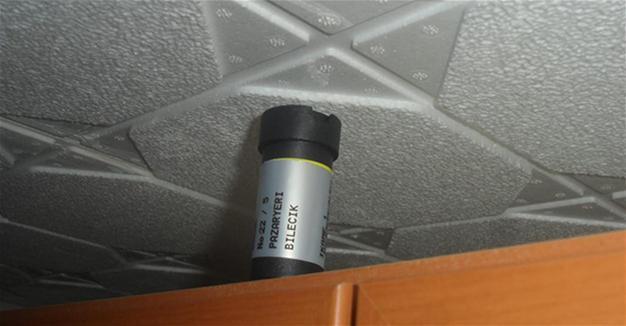Radon gas in homes measured to minimize cancer risk
ÇORUM
 The Turkish Health Ministry and the Turkish Atomic Energy Authority (TAEK) have begun to install “radon sensors” in Turkish homes to determine the in-house measured values of radon gas, which makes up the majority of the radiation that stems from natural sources.
The Turkish Health Ministry and the Turkish Atomic Energy Authority (TAEK) have begun to install “radon sensors” in Turkish homes to determine the in-house measured values of radon gas, which makes up the majority of the radiation that stems from natural sources. Within the scope of the project, “Radon Gas Level Mapping in Turkey Home,” 62,000 homes across the country will be equipped with radon sensors and measurements will be made.
According to statistics, carcinogenic radon gas, which is known to accumulate in homes and in the environment, is the second leading cause of lung cancer.
Radar gas measurements in 41 provinces have been completed so far, and measurements in other cities will be completed by 2019.
The measurement devices set by trained staff from the Public Health Directorate will be installed for two months in high places, measuring and recording the level of gas in the house every day.
At the conclusion of the measurements, emergency measures shall be taken in the areas where the radon gas is detected after the devices are examined by TAEK. The floor of the houses where the radon gas is found to be high will be covered with a special material. In existing buildings, if there are cracks or water leaks in contact with the soil, the building will be repaired.
People are exposed to a lot of radiation in nature due to the physical and geographical conditions they live in, according to Çorum Public Health Director Ahmet Barış.
“The basic source of radon gas is ground and underground rocks. Radon gas is odorless, tasteless and it tends to accumulate in closed environments. It has been determined in established epidemiological studies that exposure to radon gas causes lung cancer. It is even said to be the second leading cause of lung cancer after smoking. In this regard, some studies have been carried out in the world, and studies have been carried out on the determined levels of the radon gas normally found in the mines in the areas where people have lived.”
Some precautions need to be taken to reduce radon exposure, Barış added.
“Since radon gas especially comes from the soil, cracks in buildings should be checked and ground and geological surveys need to be done firstly during construction,” Barış said, adding that materials with low radioactivity should be chosen in construction and that buildings and dwellings need to be adequately ventilated.
















